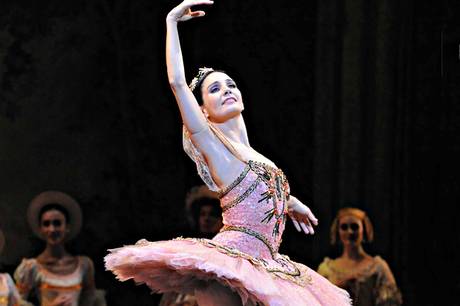The Sleeping Beauty, English National Ballet, London Coliseum

Your support helps us to tell the story
From reproductive rights to climate change to Big Tech, The Independent is on the ground when the story is developing. Whether it's investigating the financials of Elon Musk's pro-Trump PAC or producing our latest documentary, 'The A Word', which shines a light on the American women fighting for reproductive rights, we know how important it is to parse out the facts from the messaging.
At such a critical moment in US history, we need reporters on the ground. Your donation allows us to keep sending journalists to speak to both sides of the story.
The Independent is trusted by Americans across the entire political spectrum. And unlike many other quality news outlets, we choose not to lock Americans out of our reporting and analysis with paywalls. We believe quality journalism should be available to everyone, paid for by those who can afford it.
Your support makes all the difference.English National Ballet’s Sleeping Beauty is the best in Britain. Kenneth MacMillan’s production shows off the ravishing dances, with gorgeous costumes by Nicholas Georgiadis and a vivid sense of atmosphere.
Tamara Rojo, who took over as the company’s director last year, made a miscast heroine, but the ballet around her looked radiant.
Rojo is an established ballerina, a star presence with strong technique. She’s much too grande dame for Aurora, dancing the young princess with strenuous virtuosity and no warmth.
Rojo can do quadruple pirouettes, so she does, even if the orchestra has to wait while she finishes spinning. She holds long balances in the Rose Adagio, but looks at the audience rather than at her partners. Her best moments come in the last act, where she phrases her final solo with more lightness and variety.
She also lacks connection with Vadim Muntagirov, ENB’s young star. Their duets were tense, with some tentative partnering. Muntagirov looked better by himself: he’s lyrical in the melancholy second act solo, bright and clear in the dazzle of the third act. Daria Klimentová dances the Lilac Fairy with lucid authority. There’s a lovely ease to her dancing, with calm assurance in her scenes with the wicked fairy Carabosse.
Petipa’s choreography is full of soloist roles, a chance to show a company’s strength in depth. The fairies of the prologue were all established or rising names, with Nancy Osbaldeston particularly good in the pointing “finger” variation. Shiori Kase flutters beautifully as Princess Florine, with Yonah Acosta jumping confidently as the Bluebird.
James Streeter is an emphatic Carabosse, sometimes broad but always focused. Michael Coleman is sweetly fussy as the forgetful master of ceremonies, trying to hide banned knitting needles behind his back.
Peter Farmer’s scenery provides misty vistas and lush gardens, but Georgiadis is the design star. He fills the stage with sumptuous costumes, individual dresses building up a complete picture. There are distinctive geometric patterns on each fairy tutu, wonderful hats for the women of the hunting party, a subtle range of colour.
This production builds a courtly fairytale world: the whole company are caught up in the story, with quick reactions in the mime scenes. There’s the same involvement in the big corps dances. The hunt scene looks marvellous, a court at play, with deep formal curtseys woven into the folk-tinged dances.
Until 19 January. Box office 020 7845 9300.
Join our commenting forum
Join thought-provoking conversations, follow other Independent readers and see their replies
Comments